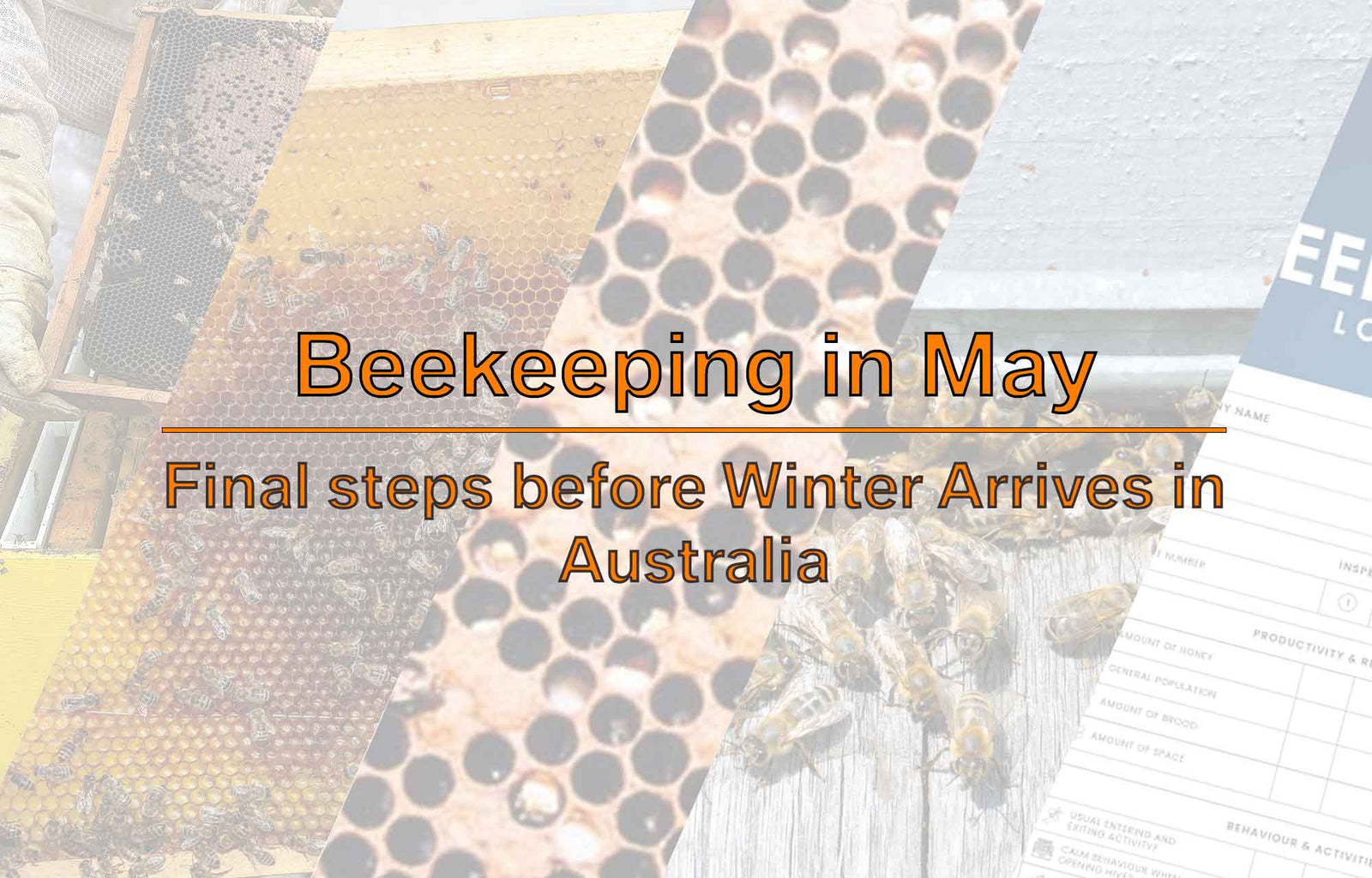🐝 Beekeeping in May: A Beginner’s Guide for Australian Beekeepers
May in Australia is a critical time for beekeepers. The days are getting shorter, the temperatures are dropping, and your bees are starting to prepare for winter. As a beekeeper, your role shifts from harvesting and managing growth to protecting, supporting, and preparing your hives for the cold months ahead. If you’re new to beekeeping, don’t worry — this guide will walk you through five key areas you should focus on in May.
1. 🕵️♀️ Final Hive Inspections Before Winter
Why it matters: Once winter sets in, you won’t be able to open your hive as often without chilling the bees. May is your last good opportunity for a full inspection.
What to look for:
- Queen activity: Look for eggs or young brood to confirm the queen is still laying, though she will slow down in May.
- Brood pattern: A healthy brood pattern is compact and centred. Scattered or spotty brood might mean the queen is failing.
- Food stores: Each hive should have at least 15–20 kg of honey for winter. If they’re low, consider feeding sugar syrup or fondant.
- Frame condition: Replace old, black, or misshapen comb. This helps prevent diseases and keeps your hive healthy.
2. 🐝 Strengthening Hives and Combining Weak Colonies
Why it matters: Weak hives with few bees won’t survive winter on their own. It’s better to support one strong hive than risk losing two weak ones.
Signs of a weak colony:
- Few bees covering frames
- No or very little brood
- Queenless or sporadic egg laying
What to do:
-
Combine weak hives with strong ones using the newspaper method:
- Place a sheet of newspaper over the strong hive’s brood box.
- Add the weak hive’s brood box on top.
- The bees will chew through the paper and gradually combine.
- Only combine healthy hives — never combine if one shows signs of disease.
Beginner Tip: Don’t panic if a hive is small. Sometimes bees naturally reduce in number before winter. But if the hive feels too quiet or light, it may not survive without help.
3. 🐛 Pest and Disease Monitoring: Your Hive’s Health Check
Why it matters: In cooler weather, bees can't defend against diseases and pests as easily. Monitoring now helps prevent problems during winter when intervention is harder.
Key issues to check:
- Varroa destructor: This invasive mite is under active control and surveillance in NSW and ACT. If you're in an affected area, follow local biosecurity protocols.
- American Foulbrood (AFB): Look for sunken or perforated brood caps and dark, sticky brood.
- Chalkbrood: Appears as white, mummified larvae and is more common in cool, damp hives.
Prevention tips:
- Especially on wooden hives, keep the hive dry and well-ventilated. Polystyrene hives like the Paradise Honey Hives, do not get cold-spot therefore the need to ventilation is not necessary.
- Regularly replace old comb.
- Use good hygiene practices when handling frames and tools.
Beginner Tip: If you’re unsure about disease signs, take a photo and contact your local Department of Primary Industries (DPI) or beekeeping mentor for help.
4. 🌬️ Reducing Hive Entrances and Managing Ventilation
Why it matters: As temperatures fall, bees need to keep the hive warm and dry. Large entrances or poor airflow can lead to moisture build-up, mould, or robbing by other bees.
What to do:
- Install entrance reducers: These are small wooden or plastic pieces that shrink the entrance space, helping bees conserve heat and defend their hive.
- Improve ventilation: For wooden hives add a small ventilation hole or lift the lid slightly using a matchstick or corner spacer (but avoid full gaps that cause drafts).
- Tilt hives slightly forward to help moisture drain out the entrance.
Beginner Tip: Avoid wrapping hives unless you’re in a very cold region. In general Australian winters are often mild enough that bees don’t need insulation, just protection from wind and damp. If using wraps, make sure that ventilation holes are not covered.
5. 📖 Reviewing Hive Records and Planning Ahead
Why it matters: Good records help you track hive health, queen performance, and honey flow timing — all of which help you become a better beekeeper.
What to record:
- Hive strength at each visit
- Queen activity and temperament
- Amount of honey and brood
- Any issues like pests or robbing
May is the time to:
- Update your records from the past season
- Plan winter jobs (e.g., cleaning gear, ordering new frames)
- Reflect on what worked and what didn’t — Did you split too late? Was your hive underfed?
Beginner Tip: Use a notebook, a spreadsheet, or a beekeeping app to log hive visits. Simple notes now will make a big difference next spring.
🌼 Final Words for New Beekeepers
May is all about setting your bees up for winter success. You don’t need to do everything perfectly — just focus on:
- Making sure the hive is healthy
- Ensuring they have enough food
- Keeping them dry, warm, and pest-free
Your bees do the hard work of surviving. You’re just helping them get ready for it.




